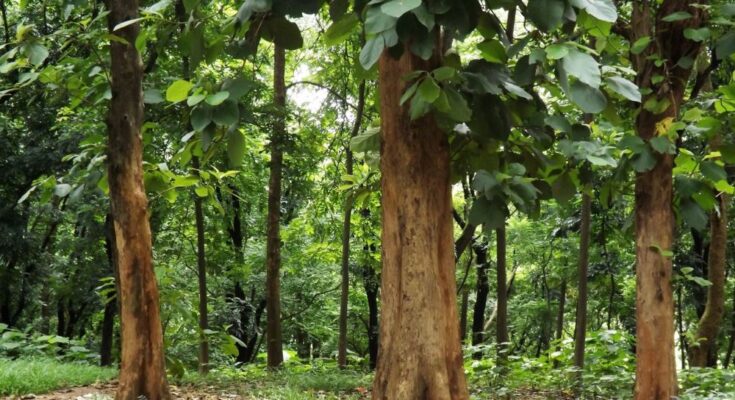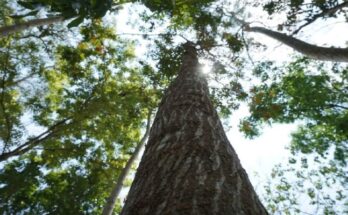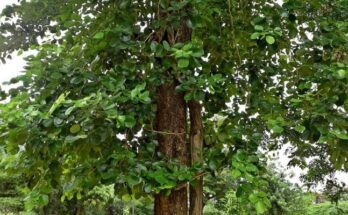|
Getting your Trinity Audio player ready...
|
Teak trees, also known as Tectona grandis, are highly valued for their strong and durable wood, making them a popular choice for furniture, flooring, and boat building. Teak wood also has a beautiful golden-brown color and a distinctive grain pattern that adds to its aesthetic appeal. In this blog post, we will explore the beauty and durability of teak trees.
Teak Tree Scientific Classification
| Kingdom | Plantae |
|---|---|
| Division (Phylum) | Angiosperms |
| Class | Eudicots |
| Order | Lamiales |
| Family | Lamiaceae |
| Genus | Tectona |
| Species | grandis |
Life Cycle of Teak Trees
Teak trees are medium to large-sized trees, with an average height of 30-40 meters (98-131 feet) and a diameter of 1.5-2.5 meters (4.9-8.2 feet). They have large, oval-shaped leaves and small, fragrant white flowers that bloom in clusters. Teak trees can live for up to 100 years, and their wood becomes stronger and more durable as the tree ages.
Challenges of Growing Teak Trees
Growing teak trees can be challenging because they require a warm and humid climate, with temperatures ranging from 20-40°C (68-104°F) and annual rainfall of 1,500-2,500 mm (59-98 inches). They also require well-drained soil and plenty of sunlight to thrive. In this blog post, we will explore the challenges of growing teak trees and how they can be overcome.
Don’t Miss: The Ultimate Guide to Corn Plant: Unveiling the Beauty and Care Secrets
Importance of Sustainable Teak Forestry
The demand for teak wood has led to concerns about overharvesting and unsustainable logging practices. To address these issues, many countries have implemented regulations and certification programs to promote sustainable teak forestry and protect the long-term health of teak tree populations. In this blog post, we will explore the importance of sustainable teak forestry and the role it plays in protecting the environment.
Teak Tree Uses
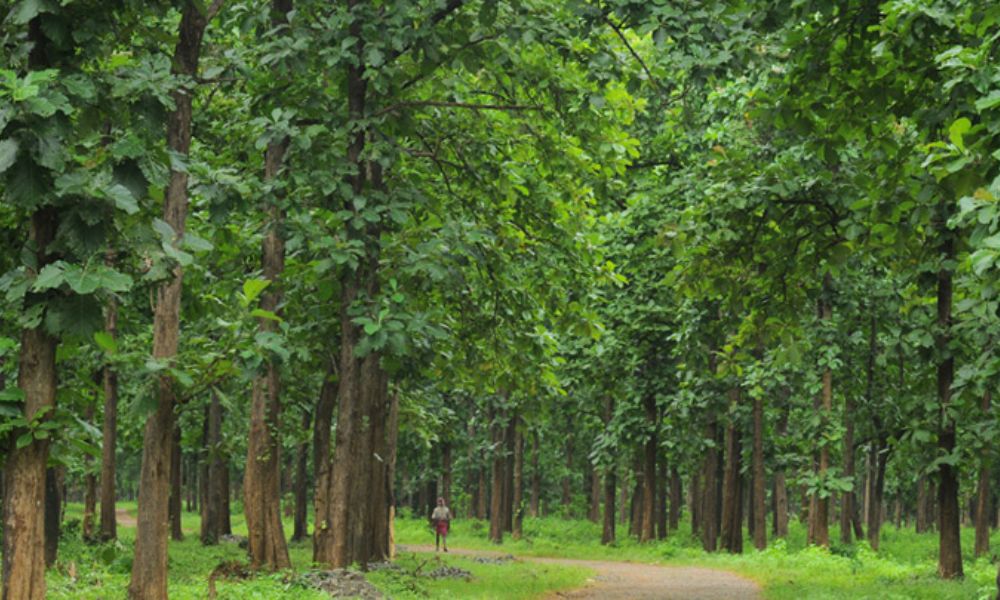
- Furniture: Teak wood is pried for its durability, stability, and biological resistance to decay and insects, creating it an perfect option for furniture. The wood’s unique grain pattern and warm, golden-brown color make it a popular choice for outdoor furniture, such as garden benches and patio sets. It is also used for indoor furniture, including dining tables, chairs, and cabinets.
- Flooring: Teak wood’s strength and resistance to moisture make it an excellent choice for flooring, particularly in high-traffic areas or in homes located in humid climates. The wood’s natural oils and resins help protect it from damage caused by spills or exposure to water, and its beauty and durability make it a popular choice for both residential and commercial settings.
- Boatbuilding: Teak wood’s unique properties make it a popular choice for boatbuilding, particularly for decking and interior cabinetry. Its natural resistance to moisture, rot, and insects makes it an ideal material for boats that will be used in saltwater environments. Teak wood is also used for boat rails, trim, and handholds, thanks to its natural grip and resistance to splintering.
- Construction: Teak wood is a popular choice for construction materials, particularly in areas that are prone to flooding or where high levels of moisture are present. The wood’s strength and resistance to rot and insects make it an ideal material for building foundations, beams, and other structural components.
Other Uses
Teak wood is also used for a variety of other purposes, including:
- Musical instruments, such as guitars and pianos, thanks to its resonance and durability.
- Cutting boards and kitchen utensils, thanks to its natural resistance to bacteria and other microbes.
- Decorative carvings and sculptures, thanks to its beauty and workability.
- Utility poles and fence posts, thanks to its strength and durability.
Teak Tree Leaves
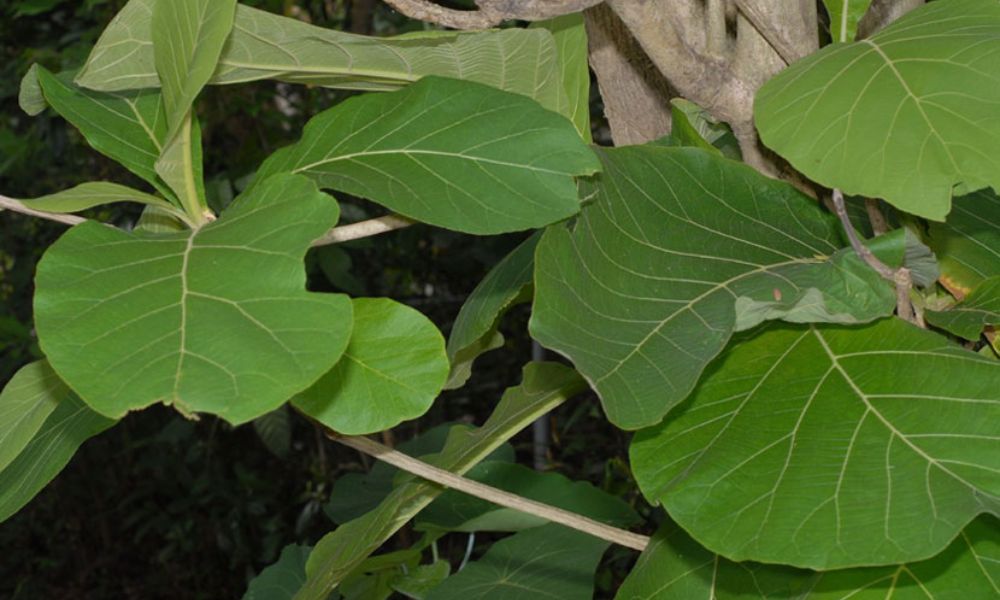
Teak tree leaves are large and oval-shaped, measuring about 15-45 cm in length and 8-23 cm in width. They are arranged in an alternate pattern on the branches and have a shiny, leathery texture with prominent veins. The leaves have a deep green color when they are mature and turn yellow or red before falling off in the autumn season.
Don’t Miss: Cherry Tree | Facts, Benefits, Cultural Significance, Varieties, & How to Grow
Uses of Teak Tree Leaves
- Medicinal Properties: Teak tree leaves have been used in traditional medicine for their anti-inflammatory, anti-microbial, and anti-cancer properties. The leaves are rich in compounds such as flavonoids, terpenoids, and tannins, which are believed to be responsible for their medicinal properties. Teak tree leaves are used in various traditional remedies to treat ailments such as fever, headache, and skin diseases.
- Fodder for Livestock: Teak tree leaves are a nutritious source of food for livestock such as cows, goats, and sheep. The leaves are rich in protein, carbohydrates, and minerals, making them an excellent supplement to the animal’s diet. Farmers in certain parts of the world use teak tree leaves to feed their livestock during the dry season when other sources of food are scarce.
- Mulch: Teak tree leaves can be used as a natural mulch for plants and crops. The leaves are rich in nutrients and help to retain moisture in the soil, improving soil health and promoting plant growth.
- Decorative Purposes: Teak tree leaves are also used for decorative purposes, such as in floral arrangements and as ornamental foliage in gardens. The leaves’ shiny texture and deep green color make them an attractive addition to floral displays.
- Biofuel: Teak tree leaves can also be used as a source of biofuel. Researchers have explored the potential of teak leaves as a feedstock for biofuel production, as they are abundant and can be harvested without harming the tree.
Teak Tree Benefits
- Durable and Valuable Wood: Teak wood is renowned for its strength, durability, and resistance to decay, making it a highly prized material in the furniture and construction industries. Its value has made teak tree plantations a lucrative business, providing a source of income and employment for many people.
- Carbon Sink: Teak trees are excellent carbon sinks, meaning they absorb carbon dioxide from the atmosphere and store it in their tissues, helping to reduce the amount of greenhouse gases in the atmosphere. This makes teak tree plantations an effective way to combat climate change.
- Soil Conservation: Teak trees have deep roots that help to prevent soil erosion and improve soil quality, making them ideal for reforestation projects and as windbreaks.
- Wildlife Habitat: Teak trees provide a habitat for a variety of wildlife, including birds, insects, and small mammals. The trees’ large branches provide shelter and nesting sites, while the leaves and fruits provide a source of food.
- Medicinal Properties: Teak trees have been used for centuries in traditional medicine to treat a range of ailments, including fever, inflammation, and skin diseases. The tree’s leaves, bark, and roots contain compounds with anti-inflammatory and antimicrobial properties.
- Livelihoods and Economic Development: Teak tree plantations provide employment and income for many people, particularly in rural areas. The sale of teak wood and products made from it can generate significant revenue, supporting local economies.
- Recyclable: Teak wood is highly recyclable, meaning it can be reused in a variety of ways. It can be repurposed for furniture or used as fuel, reducing waste and supporting sustainable resource management.
Teak Wood Uses
- Outdoor Furniture: Teak wood is a popular choice for outdoor furniture due to its resistance to water, decay, and pests. It is commonly used to make patio furniture, benches, and chairs that can withstand exposure to the elements.
- Boatbuilding: Teak wood is also commonly used in the boatbuilding industry due to its resistance to water and pests. It is used to make boat decks, rails, and other parts that are exposed to the elements.
- Flooring: Teak wood is a popular choice for flooring due to its durability and resistance to moisture. It is commonly used in high-traffic areas such as offices, hotels, and homes.
- Paneling: Teak wood is also commonly used for paneling and trim work due to its unique grain patterns and rich color.
- Kitchen Utensils: Teak wood is also a popular choice for making kitchen utensils such as cutting boards, bowls, and spoons due to its resistance to water and bacteria.
- Musical Instruments: Teak wood is also used in the construction of musical instruments such as guitars, drums, and pianos due to its acoustic properties.
- Construction: Teak wood is also used in the construction industry for framing, beams, and columns due to its strength and durability.
Wrapping Up
Teak trees are fascinating and important trees that provide a range of benefits, from environmental to economic and cultural. Their distinctive appearance, slow growth rate, environmental benefits, economic value, medicinal properties, and cultural significance make them an essential part of many tropical ecosystems and a valuable resource for many people. By planting and managing teak tree plantations sustainably, we can ensure that these benefits continue for generations to come.
Don’t Miss: Rubber Tree | Facts, Uses, Wood, Seeds & Care
